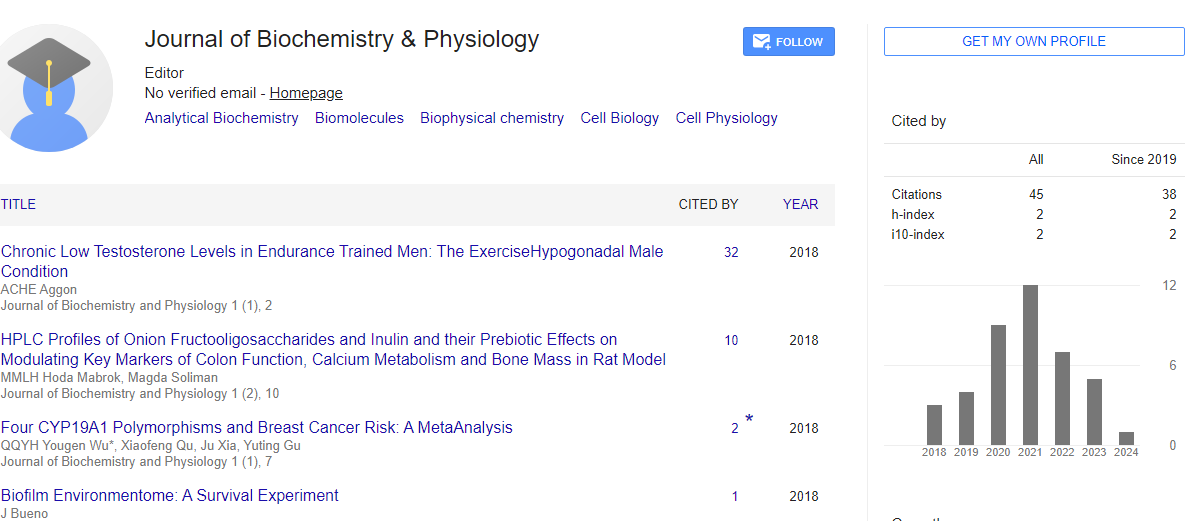Short Communication, J Biochem Physiol Vol: 4 Issue: 6
Catalytic Hydrothermal Conversion of Sugarcane Bagasse Anaerobic Digestion Digestate into Phenolics and Hythane
Isha Sharma r *
part-time PhD at Queensland University of Technology
*Corresponding Author:Isha Sharma
part-time PhD at Queensland University of Technology
Abstract
Green house emissions leading to environmental issues, declining petroleum reserves and energy security concerns have promoted the current exploration of sustianable green options. This includes conversion of wastes to energy as well as to platform chemicals for the chemical and polymer industries. Hydrothermal treatment of wet biomass waste opens up the possibilities of combined fuel production and wastewater treatment in both industrial and densely populated areas where large amounts of wet waste materials are available. In this study, we proposed an integrated process where the digestate from anaerobic digestion of lignocellulosics can be transformed into valuable products. Firstly, the wet solids of the digestive are converted into phenolic compounds, a key building block for the preparation of polymers and resins, by hydrothermal liquefaction (HTL). Thereafter, the generated waste aqueous stream, a by-product of the HTL process, is subjected to hydrothermal gasification (HTG) to produce gaseous fuel - hydrogen and methane (i.e., hythane). To facilitate these thermochemical transformations, we prepared a series of novel iron catalysts doped on potassium feldspar. These synthesized cheaper catalysts provided high yields of phenolics with high selectivity for phenol and 4-ethylphenol. The aqueous stream comprised mainly of lactic acid, glycolic acid and glycerol. Hydrothermal gasification of this by-product was evaluated using Ru/C, Ru/Al2O3 and La/Ce2O3 catalysts. Ru/C and La/Ce2O3 gave high yields of hythane with minor amounts of C2-C3 hydrocarbons, CO and N. Overall, the integrated process resulted in the production of energy, chemicals and re-usable water.
Keywords: Biochemistrry,Physiology
Biography
Isha Sharma is undertaking part-time PhD at Queensland University of Technology, Australia. She has been serving the Department of Environment and Science, Queensland since 2010, currently as Team Leader within the End of Waste Team. Isha holds Master’s degree in Environmental Science from Bharathiar University, India with her research article published in Elsevier Waste Management Journal in 2009. Since 2005, Isha has been working in waste-management sector internationally including that with UNDP, IUCN and Winrock International. Isha has co-authored the book “Biogas as Renewable Sources of Energy in Nepal: Theory and Development” published by AEPC, Nepal Government in 2015.
 Spanish
Spanish  Chinese
Chinese  Russian
Russian  German
German  French
French  Japanese
Japanese  Portuguese
Portuguese  Hindi
Hindi 